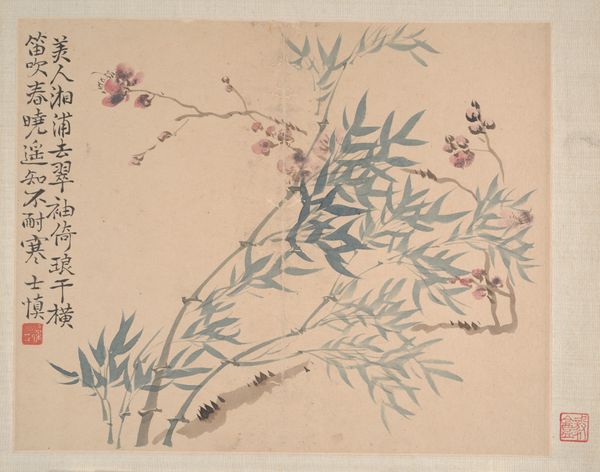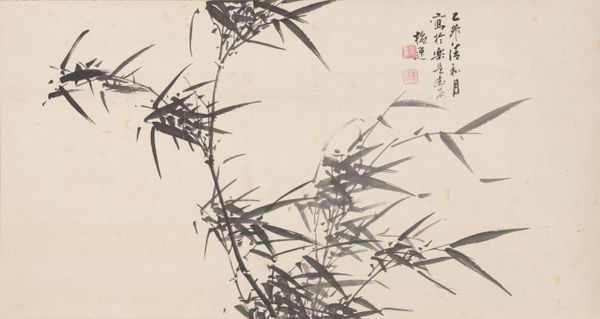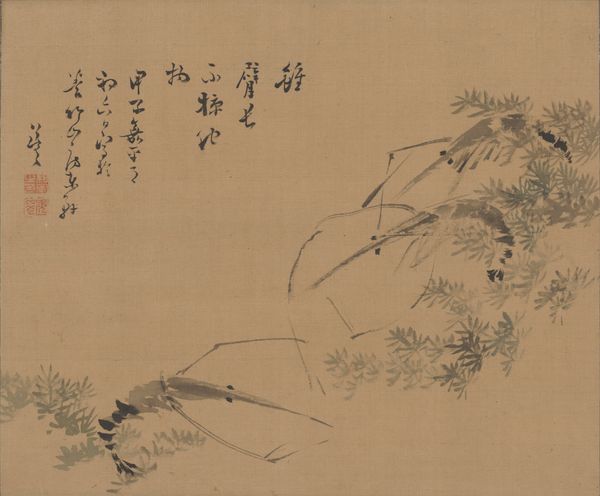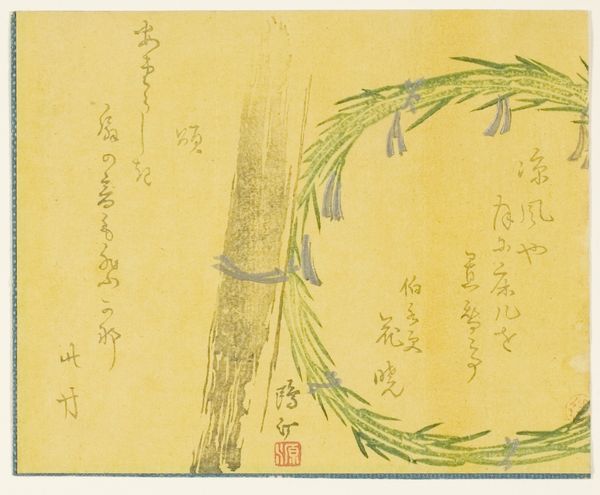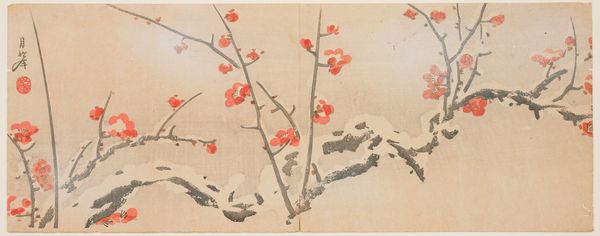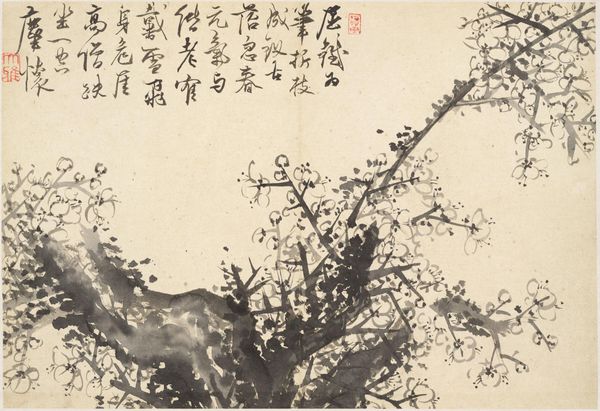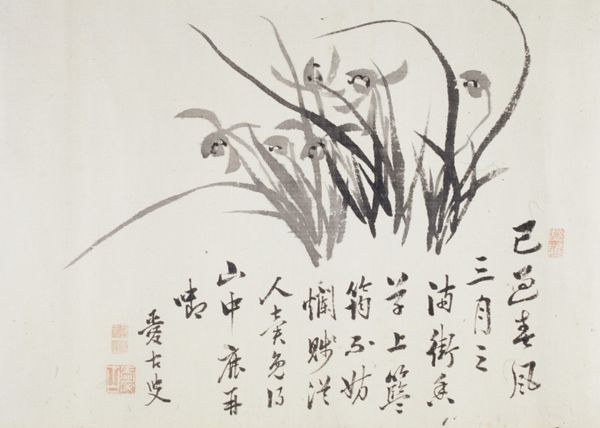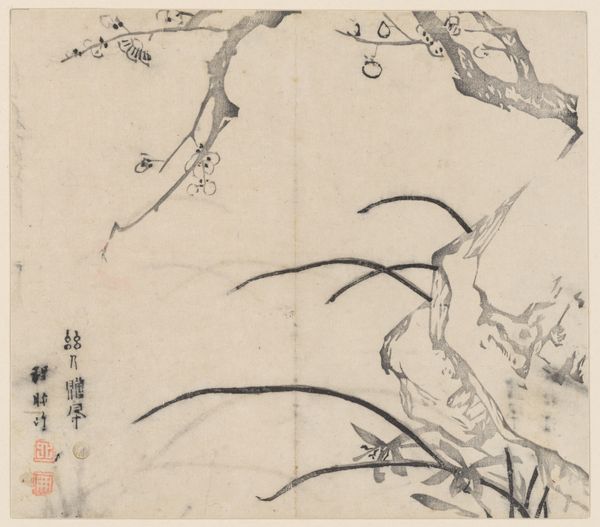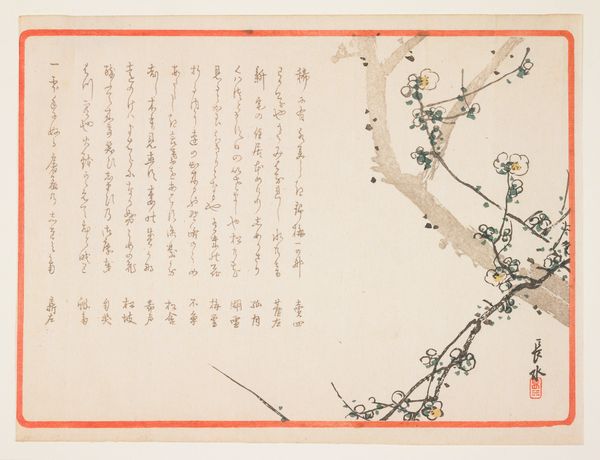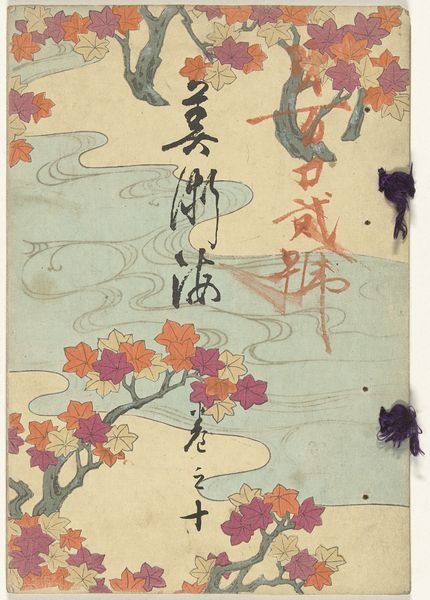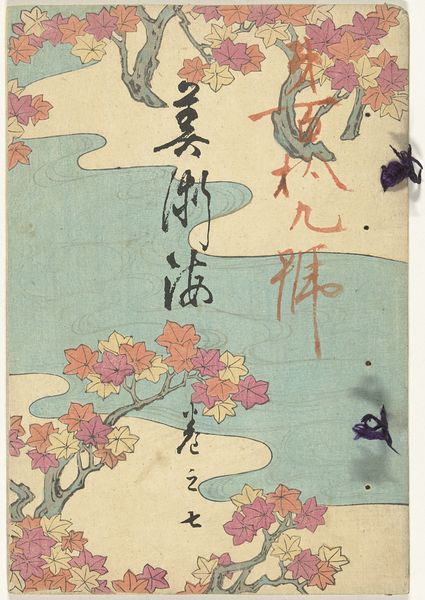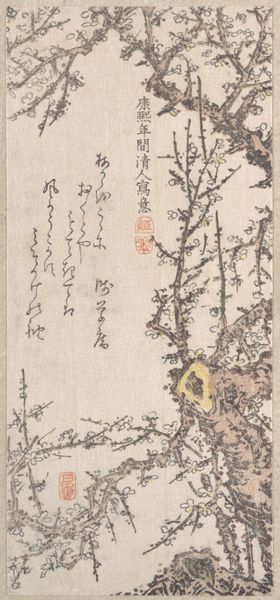
coloured-pencil, print, watercolor, ink
#
coloured-pencil
#
water colours
# print
#
landscape
#
ukiyo-e
#
watercolor
#
ink
#
coloured pencil
#
orientalism
Dimensions: 9 3/16 × 11 in. (23.3 × 28 cm) (image, sheet, uchiwa-e)
Copyright: Public Domain
Curator: The delicacy is striking. Looking at this, the 'White Wisteria,' it almost seems weightless, doesn't it? Editor: It does. The subtle color palette contributes to that sense of ephemeral beauty. This is a print by Yamada Hōgyoku, made sometime in the 1830s. What draws you to it particularly? Curator: Knowing this was created in the 1830s, what stands out to me is how subtly Hogkyoku challenges prevailing notions of orientalism. The almost minimalist execution focuses on the essential elements of wisteria's symbolic load within Edo period aesthetics while questioning representational tropes. The emphasis is not on grandeur or exoticism, but instead draws attention to the very precise emotional restraint typical for *ukiyo-e*. It’s such a departure. Editor: I see what you mean. Ukiyo-e often portrayed more dynamic scenes from urban life, and wisteria was used as a symbol within these artworks; often paired with portraits of courtesans in order to indicate the nuances of transience and desire. To isolate it like this draws focus to that semiotic play itself, making a statement about representation within popular prints, which during the Edo period functioned much like printed magazines do today. How very contemporary! Curator: Precisely. And that bold yet muted choice speaks volumes. We tend to look back and assume a homogenous voice in historical artistic movements, but artworks like this, which are created using ink, watercolor and colored pencil, push back against such assumptions. They encourage us to seek nuance and the quiet revolutions that occurred in artistic circles when challenging conventions. Editor: Indeed. This single stem becomes an exercise in challenging socio-historical expectations. It speaks to the power of artistic practice as social commentary, even within genres we often associate with simple beauty or the everyday. Curator: It reminds us that even the most seemingly simple images carry layered meanings if we bother to investigate. Editor: A good reminder to resist easy categorization and delve into the complexities behind visual expression.
Comments
No comments
Be the first to comment and join the conversation on the ultimate creative platform.

